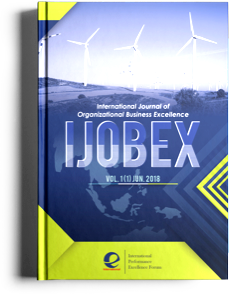Abstract
In this study, the ethnic problems which are one of the most significant and perhaps the primary structural difficulties and problems of the nation-state and possible solutions will be suggested. Even if it starts with the general information, the focus of this study would be the subject matter which is known as the Southeastern problem in Turkey, yet it has started to be mentioned as the Kurdish problem in the recent years. This study has the purpose of analyzing the mentioned problem in comparison with the Chinese Problem in Malaysia and determining the advantageous and disadvantageous circumstances in each subsection. Based on those determinations, recommendations will be included regarding which dynamics need to be prioritized in realizing a holistic solution process. The comparison will be conducted in thirteen subsections.
References
Abdullah, A. & Pedersen, P. B. (2009). Understanding Miltucultural Malaysia, Selangor: Prentice Hall.
Alptekin, M. Y. (2015). Kuguk Asya: Malezya Tarih, Toplum, Kultur, Ekonomi ve Siyaset, [Little Asia: Malaysia, History, Society, Culture, Economy and Politics] Trabzon: Karadeniz Teknik Universitesi Yayinevi.
Comber, L. (1983). 13 May 1969 A Historical Survey of Sino-Malay Relations. Malaysia, Kuala Lumpur: Heinemann Asia.
Edmonds, J. (1968). Religion, Intermarriage and Assimilation: the Chinese in Malaya. Race, 10(1), 57-67.
Gullick, J. M. (1987). Malay society in the late nineteenth century: the beginning of
change. New York: Oxford University Press
Gunduz-Ho§gor, A. & Smits, J. (2002). Intermarriage between Turks and Kurds in Contemporary Turkey: Inter-ethnic
Relations in an Urbanizing Environment, European Sociological Review, 18(4), 417432.
Hirchman, C. (1985). The Socaiety and Its Environment", in Frederica Bunge (Ed). Malaysia A Country Study, pp. 67-127, Washington DC: US Government Printing Office.
Jesudason, J. V. (1989). Ethnicity and the Economy. New York: Oxford University Press.
KONDA (2010). Toplumsal Yapi Ara§tirmasi Biz Kimiz [Social Structure Research Who We Are), Retrieved from www.konda.com.tr on 25 Januari 2019 (Open Access).
KONDA, (2006). Toplumsal Yapi Ara§tirmasi "Biz Kimiz?" [Social Structure Research, Who Are We?]. Retrieved from http://konda.com.tr/wpcontent/uploads72 017/02/2006 09 KONDA Toplumsal Yapi. pdf on 28 January 2019. Open Access.
McDowall, D. (2004). Modern Kurt Tarihi [A Modern History of the Kurds], Translated by: Ne§enur Domani?. Istanbul: Doruk Publication.
Mohamad, M. (1981). The Malay Dilemma. Kuala Lumpur: Federal Publications.
Natali, D. (2009). Kurtler ve Devlet, [The Kurds and the State Evolving National Identity in Iraq, Turkey and Iran], Translated by: ibrahim Bingol. istanbul: Avesta
Publication.
Rabushka, A. (1973). Race and Politics in Urban Malaya. Hoover California: Institution
Press.
Sarikaya, Y (2008). Tarihi ve Jeopolitik Boyutlariyla iran'da Milliyetgilik, [Nationalism in Iran with its Historical and Geopolitical Dimensions]. istanbul: Otuken Publications.
Sulochana, Nair (2007). "Fostering National Unity and Enhancing Ethnic Relations in Malaysi: The Role of Poverty Eradication Policies", in Abdul Rahman Embong (ed.), Rethinking Ethnicity & Nation-Building, Selangor: Malaysian Social Science
Association.
Yegen, M., Ugra§ U. T, & Mehmet Ali, £. (2016). Kurtler Ne istiyor Kurdistan'da Etnik Kimlik, Dindarlik, Sinif ve Segimler, [What do the Kurds Want? Ethnic Identity, Religiosity, Class and Elections in Kurdistan]. istanbul: ileti§im Yayinlari.
Young, K., Bussink, W. C. F., & Hasan, P. (1980). Malaysia Growth and Equity in a Multicultural Societ., Baltimore: The John Hopkins University Press.

This work is licensed under a Creative Commons Attribution-NonCommercial-ShareAlike 4.0 International License.
Copyright (c) 2019 BINUS Higher Education

